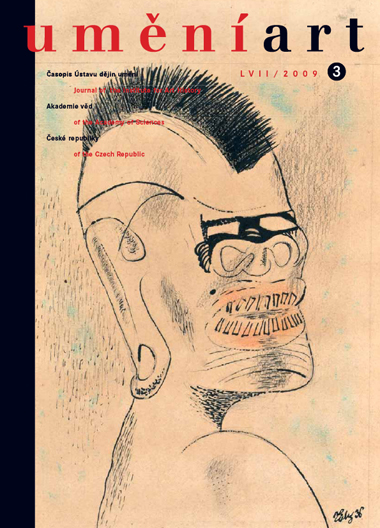Jana Zapletalová
Marat Icones, Dionýsius Strauss a koncepty výzdoby sídel hradiských premonstrátů
Marat Icones is the name of an album preserved in the Kroměříž chateau library, which, alongside valuable drawings and prints from the Roman artistic setting, contains eleven folios of text written by the artist and member of the Premonstratensian Hradisko Monastery Dionýsius Strauss. The introductory texts are about Palestinian towns and contain a list of emperors and their mottos and excerpts of passages from Kircher's text on hieroglyphs. These are followed by a group of five folios containing concepts written in Latin on the decorative painting on the Premonstratensian residences in Šebetov, Konice, and Vřesovice. In it, Dionýsius Strauss gives a detailed description of the themes of the paintings that are to decorate the individual rooms, in particular in the residence in Šebetov, including the Latin inscriptions that should accompany the paintings. Based on a close study and analysis of the text it was possible to date the manuscript to 1715-1720 and to determine that the text as a whole was not intended to serve as a description of existing decorations or as a concept for the paintings, but that rather it emerged in the last years of Strauss's life and was partly a description of some paintings that had already been completed and partly just a plan for the decorations. A comparison of how the Latin citations are shaped and the choice of themes for the individual murals produced, in the context of decoration as a whole, some interesting findings about the mural paintings in the former Premonstratensian library in Hradisko. Strauss's concepts for the decoration of the residence in Šebetov are based on several drawings created in the circles of Carlo Maratti and Giovanni Battista Gaulli included in the same album, and for the most part they remained in the form of plans, which, however, in no way reduces the importance of this text, as it is one of the few surviving concepts of decorative painting in monastery buildings from the 17th and 18th centuries.
Full-text in the Digital Library of the Czech Academy of Sciences:
https://kramerius.lib.cas.cz/uuid/uuid:a9948802-f2f5-4244-3e02-3c6eb8ddbe8a
< back

